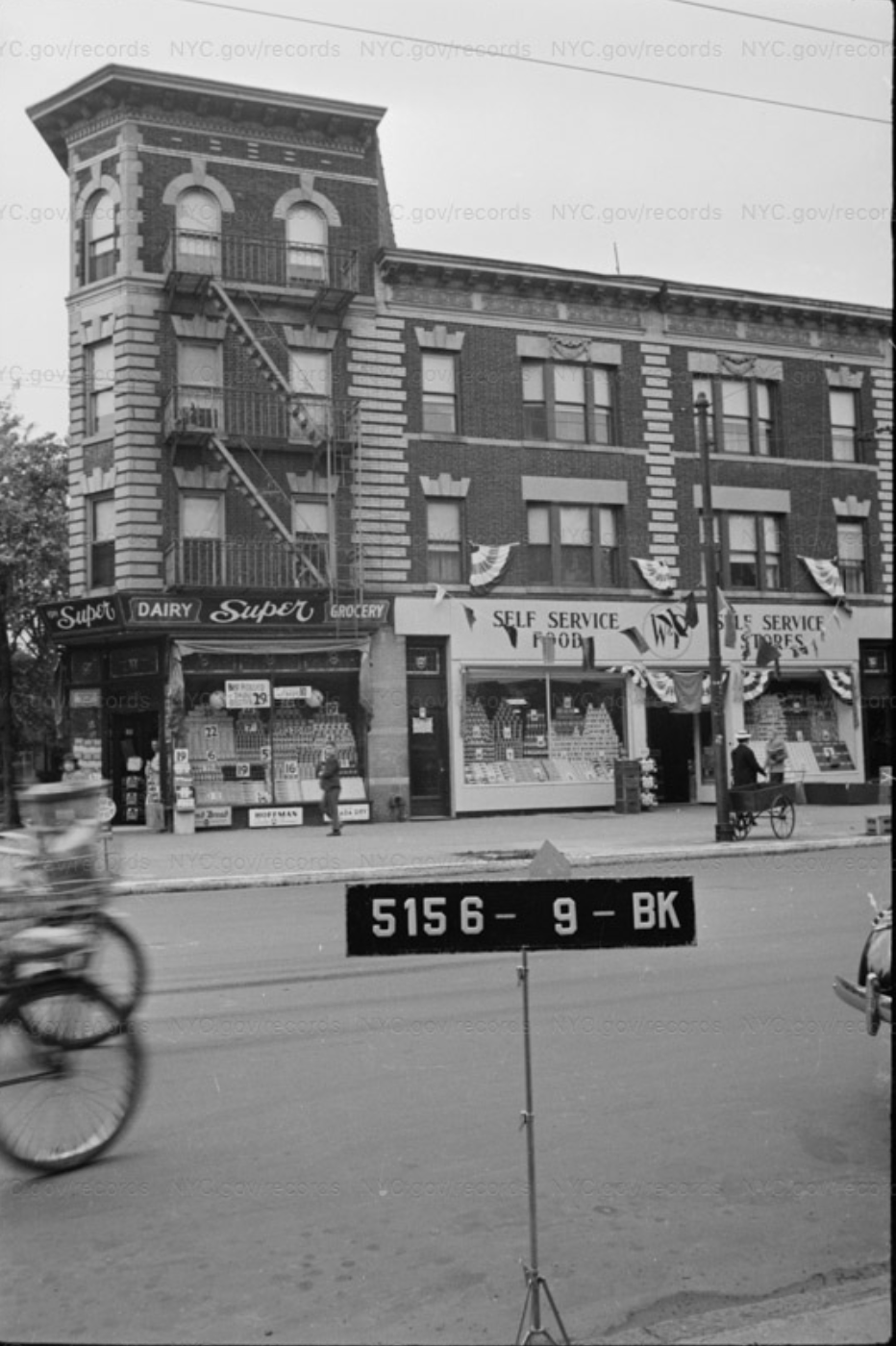A Turning Point in Grocery History
These Flatbush grocery stores from the 1940s all say “self service” on them — why? Believe it or not, before the 1920s, there was no such thing as a self-serve grocery store where you would pick your groceries off the shelf yourself. Like at a butcher or bakery, you would tell the man at the “dry goods” store what you wanted, and he would get it for you. Since so many foods were sold in bulk back then (rather than pre-packaged), it could take the grocer quite some time to fill your order. So, most orders were simply dropped off at the store, and the food delivered to your home later. The price would change not only based on the final weight, but perhaps even with your relationship with the grocer — price tags were not common. So people would pay on delivery or whenever was convenient, meaning it was nearly impossible to buy groceries anywhere other than close to home, since it required delivery and a personal line of credit.
That changed in 1919 when Clarence Saunders, a man who truly lived in the wrong era (he would have loved to call himself a disruptor and give a TED Talk), opened the Piggly Wiggly chain in Tennessee. “The Piggly Wigglies shall multiply and replenish the earth,” he said, touting that it had lower prices because it required fewer workers. Customers would walk around the aisles themselves (some early models were even laid out alphabetically), and prices were clearly displayed on each product. Although Saunders’ Piggly Wiggly supremacy dream never came to pass, the self-service concept (which was also being pioneered at other, less colorfully named American stores) soon became the norm.
Now, people were more likely to bring cash into the store and pay on the spot. And once people started owning automobiles, they had less use for delivery as well. This caused a sea change in how people obtained daily goods — they were now “cash and carry.” The stores in these photos most likely advertise themselves as “self service” to not only alert people how they should expect to shop there, but also that the prices are low.
Today, people expect any retail store that doesn’t sell bulk products to be self-service, and it’s even a New York law that prices must be clearly displayed or obtainable. I find myself thinking about this these days (June 2023) as many drugstores in the area now lock up most of products and pay to employ a clerk with a key to fetch each one. You might as well buy online, pay with credit, and get it delivered — basically go back to how inconvenient it was 100 years ago.
Here are three Flatbush self service stores I found while browsing through the 1940s NYC tax photo map. Can you name the intersection before you read the caption?
This “self service store” on the corner of Rogers Ave and Lincoln Rd would be a welcome addition to this stretch of present-day Prospect Lefferts Gardens, which is a bit of a bodega dessert. Like so many old buildings in Flatbush, this spot is now a church.
Like most self service stores, BOHACK on Church Ave and E. 8th St in present-day Kensington prominently displays its pre-packaged wares in its window. This photo is cool because you can clearly see the trolley tracks running along Church Ave. This store is now the longstanding home of Flatbush Optical.
The corner storefront on this distinctive building on Cortelyou Rd and Rugby is advertising another new concept in groceries at the time: the “super” market, which contained dry goods as well as products from a butcher and baker. It’s hard to tell if this store and the self service store next door are all part of one store — which would be interesting, since they’re now two separate retail spaces. Old-school residents may think of this as the old John’s Bakery spot, but ever since that neighborhood institution left, it’s been the home to a beautiful branch of Tribeca Pediatrics. The other space is a 99¢ store.
(All photos via the NYC Municipal Archives)





When telephones were the latest new-fangled tech in Flatbush, including a rundown of old Flatbush exchange names.